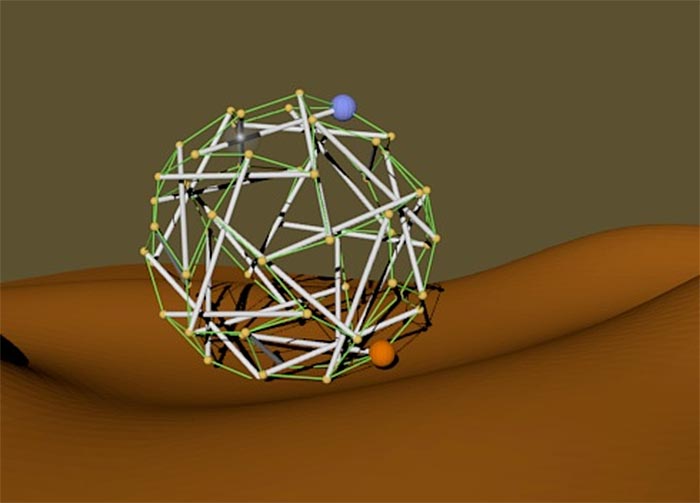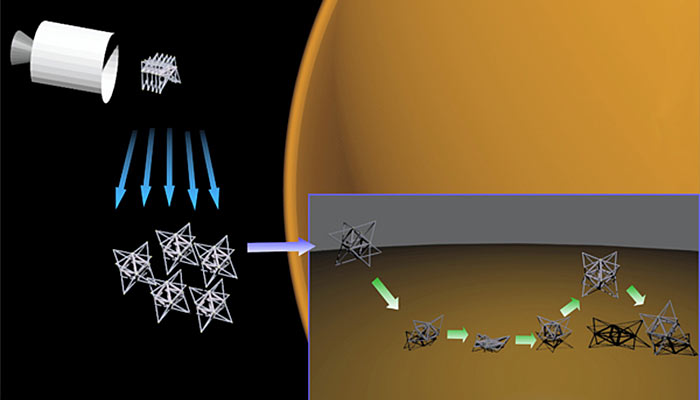Small, low-cost robots are an important technology for future planetary-science missions. At some destinations, such as Titan, imprecise terrain knowledge and unstable weather cycles make single-robot landings problematic. Teams of robots, landing at multiple locations, would provide redundancy and allow rapid planetary reconnaissance.
Landing large numbers of small robots at multiple locations is difficult with conventional technology. Current robot designs require devices such as parachutes, retrorockets, and airbags to cushion impact and maintain the robot in proper orientation. These devices do not scale down well. NASA envisions teams of dozens (or even hundreds) of small robots, weighing only a few pounds each. Landing these robots will require new technology.
The NASA Innovative Advanced Concepts program recently awarded a $100,000 Phase I grant to develop such technology.
A team led by Vytas SunSpiral and Adrian Agogino from the Intelligent Systems Division of the NASA Ames Research Center proposes to develop a radically different type of robot, based on a tensegrity concept. Tensegrities are counter-intuitive tension structures with no rigid connections, built purely upon tensile and compression elements. The team calls its concept the Super Ball Bot.
The Super Ball Bot would be light, capable of absorbing strong impacts, and redundant with no single-point failure modes. It could recover from any landing orientation. The team envisions Super Ball Bots being dropped on a planetary surface and bouncing to a landing. Later, the Bot could deform itself to roll to a location of scientific interest.
(Rolling or tumbling motion for planetary rovers is not a new idea. It’s been proposed in the past, for inflatable tumbleweed rovers that would use the wind for propulsion.)



Leave a Reply